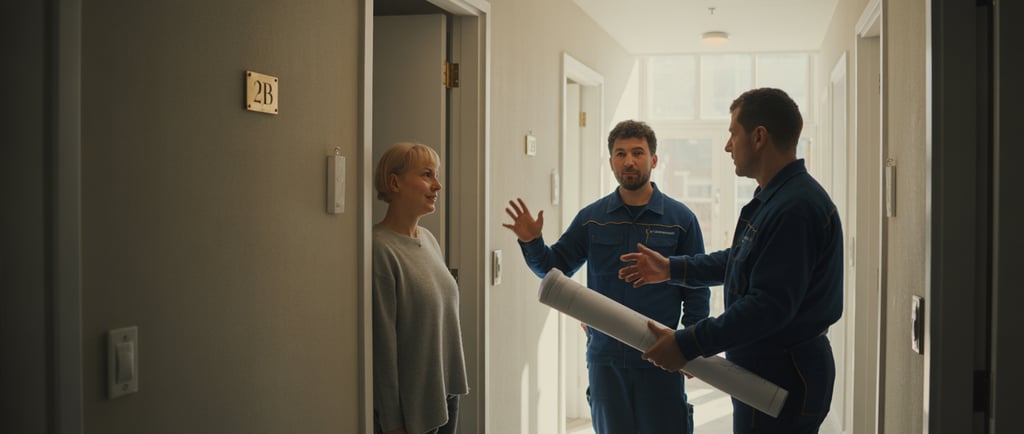Planning for a Multifamily Renovation with Occupied Units
Renovating multifamily properties while tenants remain in residence requires specialized planning, clear communication, and compliance with local tenant protection laws. Learn essential strategies for managing occupied renovations in DC and Maryland while minimizing disruption and maximizing success.
7/29/20252 min read


Renovating multifamily properties while tenants remain in residence presents unique challenges that require careful planning and specialized expertise. In the DC and Maryland markets, successful occupied renovations demand strategic coordination, clear communication, and compliance with strict tenant protection laws. Here's how to navigate this complex process effectively.
Understanding DC/Maryland Tenant Rights During Renovations
Before beginning any occupied renovation project, property owners must understand local tenant protection regulations. In Washington DC, the Tenant Bill of Rights provides specific protections during construction, including rights to alternative accommodations if utilities are disrupted. Maryland has similar protections under state landlord-tenant law. Failure to comply can result in costly legal issues and project delays.
Your general contractor should be well-versed in these regulations and help ensure full compliance throughout the renovation process.
Developing a Phased Renovation Strategy
Unit-by-Unit Approach The most common strategy involves renovating units as they become vacant through natural turnover. This minimizes tenant disruption while allowing for comprehensive updates. Plan renovations during lease transition periods to maximize efficiency and reduce conflicts.
Floor-by-Floor Planning For larger properties, consider renovating entire floors sequentially. This approach allows for more efficient material delivery, utility work, and contractor scheduling while containing dust and noise to specific areas.
Common Area Prioritization Begin with common areas like lobbies, hallways, and laundry facilities during off-peak hours. This provides immediate property value improvements while minimizing daily disruptions to residents.
Communication and Tenant Relations
Effective communication is crucial for occupied renovations. Provide tenants with detailed written notices about construction schedules, noise expectations, and any temporary service interruptions. Establish regular communication channels and designate a point person for tenant concerns.
Consider offering temporary rent reductions or alternative accommodations during particularly disruptive phases. These gestures maintain tenant satisfaction and reduce turnover during the renovation period.
Managing Construction Logistics
Dust and Debris Control Implement strict containment protocols including plastic sheeting, negative air pressure systems, and daily cleanup procedures. Protect common areas with floor coverings and establish dedicated construction routes to minimize impact on occupied spaces.
Utility Coordination Schedule utility interruptions during predetermined windows and provide advance notice. Plan backup systems for essential services like water and electricity to ensure tenant comfort and legal compliance.
Security and Access Maintain building security while allowing contractor access. Consider temporary key card systems or supervised entry protocols to protect both tenants and construction materials.
Working with Experienced Professionals
Occupied multifamily renovations require contractors with specific experience managing tenant relations, local regulations, and complex logistics. Choose professionals who understand the nuances of DC and Maryland tenant laws and have proven track records with similar projects.
Ready to plan your occupied multifamily renovation? The experienced team at Artisan General Contractors specializes in seamless occupied renovations throughout DC and Maryland. Contact us to discuss how we can minimize disruption while maximizing your property's potential.
ARTISAN GENERAL CONTRACTORS
MHIC #156251 ; DC GC# 410525000523
NAICS CODES: 236118, 236220
Contact US
(301)329-5663
© 2025. All rights reserved.
